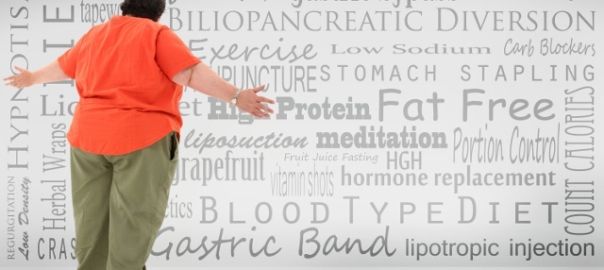DAY 3 – Dietary Guidelines On the Road
I’m traveling, and having a hard time sticking to the Dietary Guidelines.
But it’s a good thing for my project! While my home food environment surrounds me with healthy (and tasty) choices, this is shedding light on the misinterpretation of the Dietary Guidelines for Americans.
I”m trying to choose a Dietary Guidelines compliant breakfast at a hotel in Spokane, Washington after little sleep and long flight delays. It’s free and plentiful and looks typical of most hotel breakfasts likely geared towards the nation’s palate.
Here’s what’s on offer that will made a Dietary Guideline compliant day difficult:
Limit added sugars: muffins, pastries, sweetened instant oats, sweetened cereals, sweetened yogurt
Limit refined carbohydrates: white bagels, pancakes (a cool machine that pops them out)
Limit saturated fats: sausages
Limit sodium: scrambled eggs
I glance around the busy hotel breakfast room and popular items are muffins, pastries, sausages, and eggs. Based on the research, this is how most Americans eat, but it is not compliant with the Dietary Guidelines unless the rest of their day is full of nutrient-dense foods.
I finally settle on whole wheat bread, 2 hardboiled eggs, an orange, “diabetes friendly” low carb yogurt, mediocre coffee.
I don’t salt my hardboiled eggs because looking at a nutrient analysis of Day 1 and Day 2 my sodium intake has been above the recommendation. I put a ton of pepper on the eggs, but my tastebuds wanted salt. The artificially sweetened yogurt tastes pretty bad. I’m kind of grumpy from lack of sleep.
The orange was delicious!
DAY 2 – Dietary Guidelines in the Airport
Following the Guidelines today was a bit more challenging. Plenty of airport time and flight delays. . .
On these types of days I would typically cave get a sweet treat to go along with my coffee at Starbucks. But I know these things are calorie bombs with too much added sugar (so not Guideline compliant), so I resist.
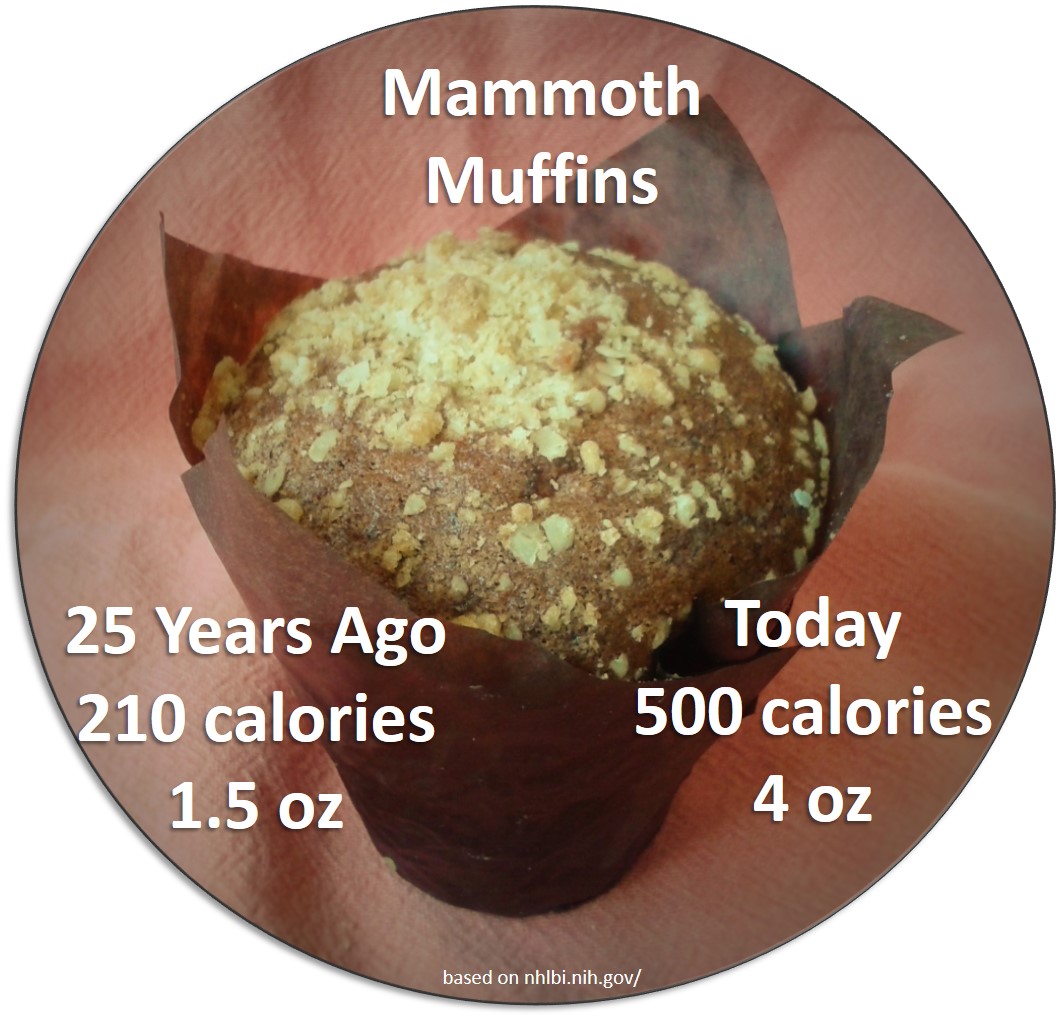
August 8, 2018
Day 1 At a Glance
Here’s a brief report about my first day following the Dietary Guidelines for Americans. To see if I’m on track, I measured out everything I ate, analyzed the nutrient content of my meals. I also took pictures so you can see what these meals look like! (They were delicious, by the way).
I won’t do this every day but will keep assessing periodically to account for the variety of foods that I like to eat, and see how they fit into the Dietary Guidelines.
Here’s what my diet looked like on DAY 1 . . .
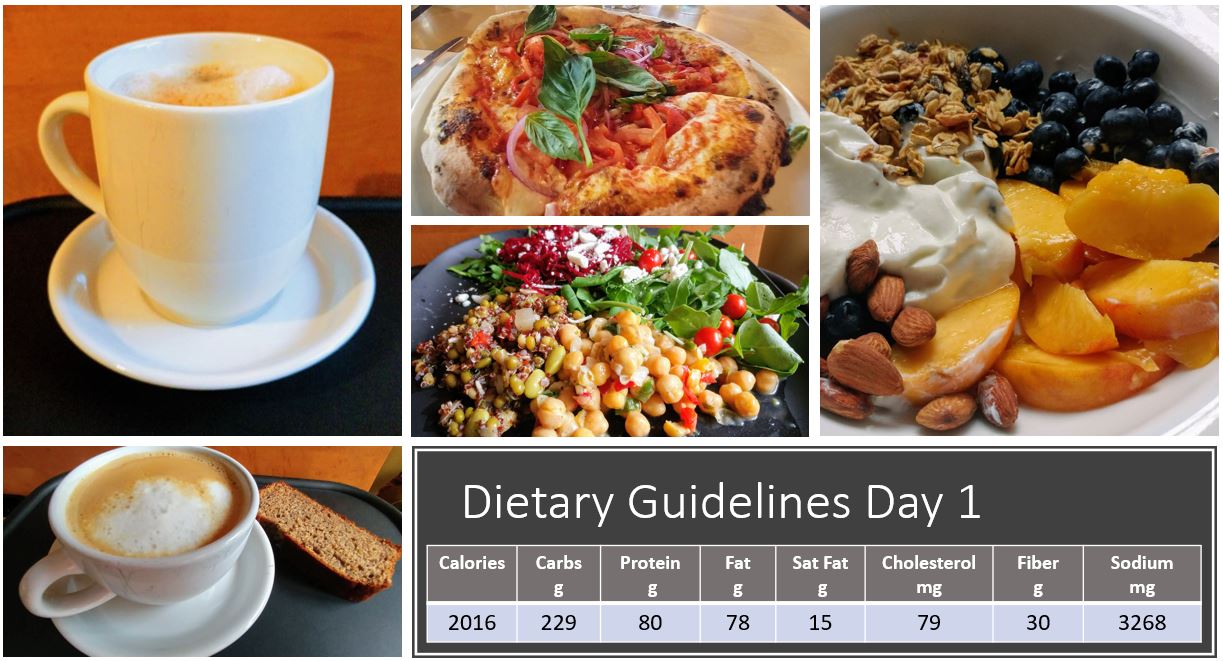
BREAKFAST was coffee & 1% milk, a fresh peach, 1 c fresh blueberries, 3/4 cup Greek yogurt (0% fat – Guidelines recommend that dairy be low-fat), 1/4 cup homemade granola, and 1/4 c almonds.
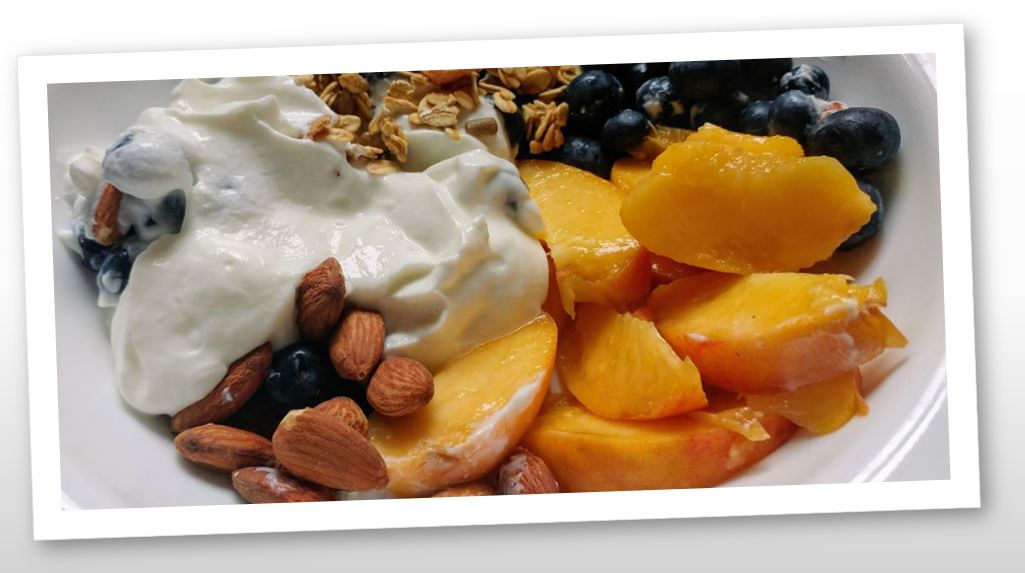
LUNCH was 1/2 cup each of citrus chickpea salad, California quinoa salad, shredded beet salad, 2 cups arugula (dressing not needed because the other 3 salads have their own dressing), 1 oz. feta cheese, cherry tomatoes (from my garden!).
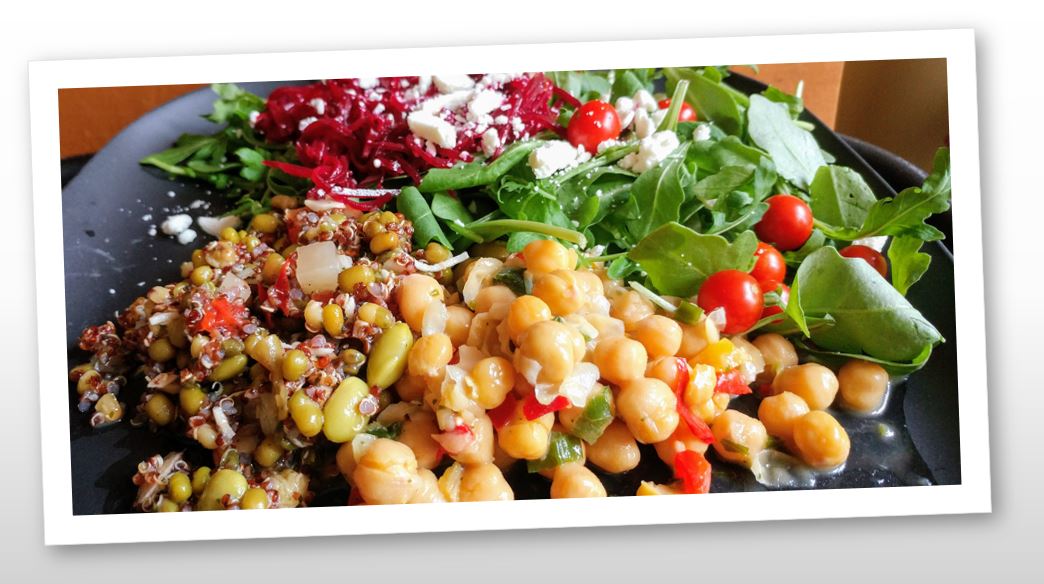
SNACK was coffee with homemade banana bread (whole-wheat flour and lower-fat/sugar than most banana breads so in line with Guideline recommendations for reduced sugar and that half of grain intake be whole grain).

SUPPER was a night out with friends and included 2 big slices of Primavera pizza (fresh tomato, roasted red peppers, red onion, fresh basil, mozzarella).
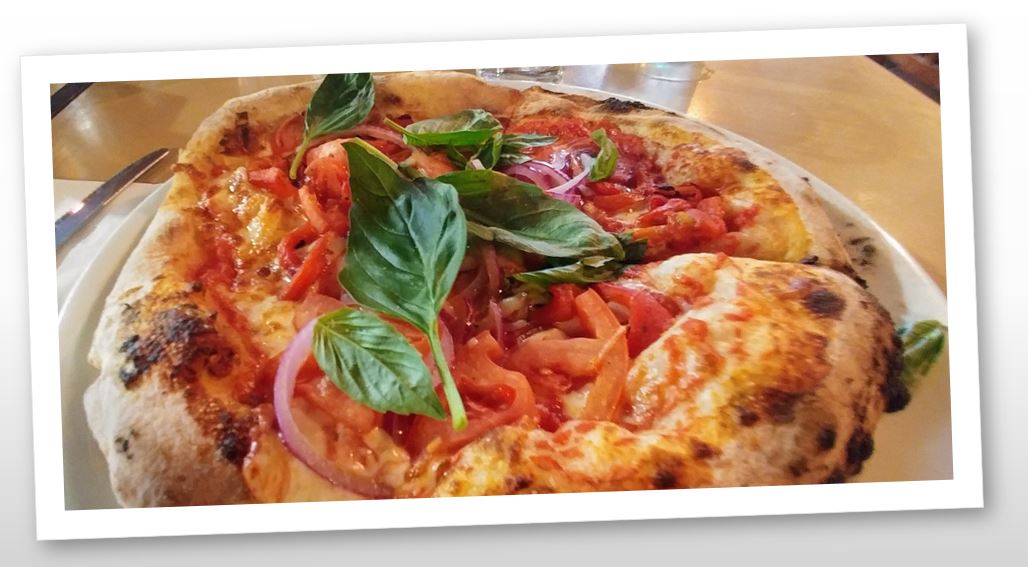
Is Coffee Part of the Guidelines?
I was relieved to find out that moderate coffee consumption can be incorporated into a healthy eating pattern. Here’s what the Guidelines have to say about coffee . . .

5 Overarching Goals of the Dietary Guidelines
Here are the overarching goals of the Dietary Guidelines – this will guide my food choices. I will delve into all of these in detail in future posts.
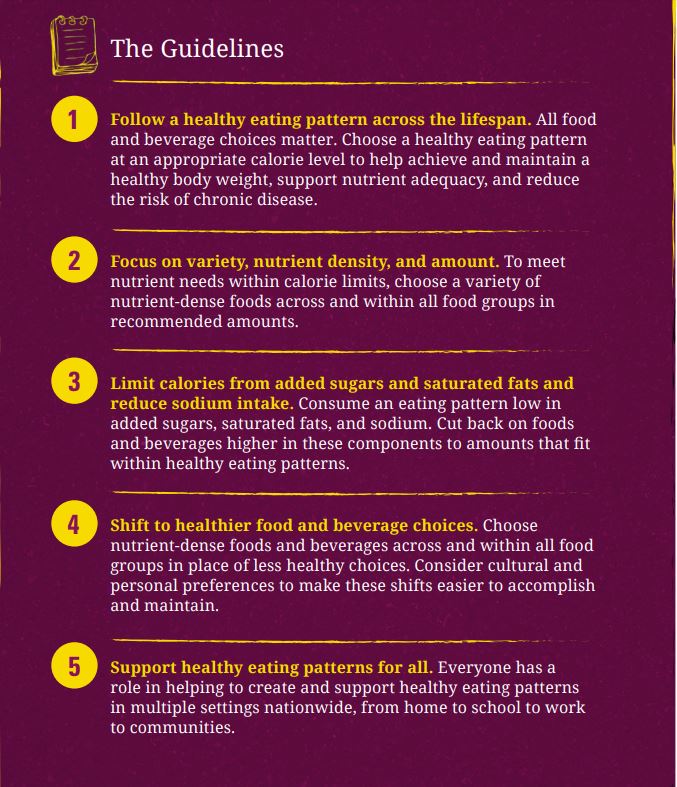
Dietary Patterns
The 2015-2020 version of the Guidelines focuses on dietary patterns – here is how the Guidelines defines these patterns:
An eating pattern is more than the sum of its parts; it represents the totality of what individuals habitually eat and drink, and these dietary components act synergistically in relation to health. As a result, the eating pattern may be more predictive of overall health status and disease risk than individual foods or nutrients. Thus, eating patterns, and their food and nutrient components, are at the core of the 2015-2020 Dietary Guidelines for Americans.
There are guidelines for Mediterranean and Vegetarian style patterns (in addition to the standard “American’ pattern). Since this is in line with my personal preferences, I will follow recommendations from these patterns.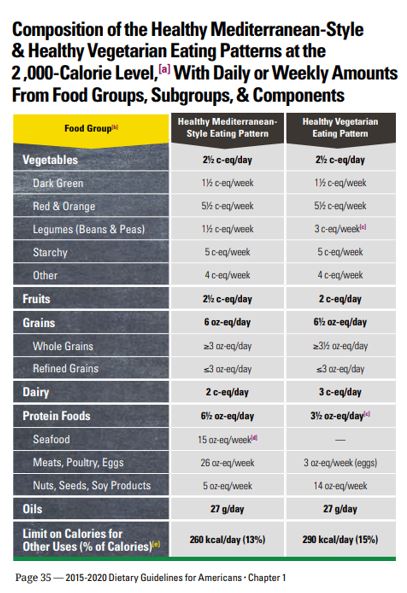
Why am doing this? See below . . .
August 7, 2018
N-of-1 Nutrition
I’ve noticed a rising trend of broadcasting n-of-1 (“experiment” of one person) diets, especially among proponents of restrictive diets: people try eating a certain way and advertise it to their friends, on social media, blogs, etc., often attributing any change to the food component eliminated (“I cut out gluten and lost 5 lbs, you should try it!”) or food group restricted (I cut carbs and feel amazing!).
It seems that we hear of benefits and positive stories more often than downsides . . .
Support for restrictive diets is quite strong in the online world. Many vocal diet proponents put their diet style in their twitter bio as a sort of identity badge (e.g., LCHF; Keto; paleo; caveman, primal).
Three popular Nutrition personalities on Twitter have adopted popular fad diets (all variations of Low Carb High Fat (LCHF)/keto diets – the fad du jour) for 1 month.
- Nutrition Wonk Katherine Pett, MS in Nutrition Biochemistry and Epidemiology and a registered dietitian and blogger at NutritionWonk.com is following a LCHF /keto diet. Katherine also summarizes nutrition news in her TWIN.
- Kevin Klatt recent PhD in Nutritional Sciences from Cornell University, is following a Vegetarian LCHF diet.
- Alan Levinovitz who explores Nutrition issues from a religion/philosophy/science perspective (author of The Gluten Lie) is following the Carnivore Diet. He followed the Carnivore diet for 13 days and provides tremendous insight into the experience here.
Evidence from n=1 experiments is quite limited and fraught with bias, so I’m excited to see how they will share their experience from a science-based perspective.
This is important, because when you restrict a food/food group it’s important to know what you are eating instead. For example, someone who wants to reduce the fat in their diet can (1) reduce fat and eat more calories from vegetables, legumes, whole grains, and lean proteins, or (2) reduce fat and eat more calories from refined carbohydrates and sugars. The ratios of carbohydrates, fats, proteins certainly don’t tell the whole story. Also, do people simply eat less/fewer calories and lose weight because their diet is so restrictive? Are they simply paying more attention to what they are eating and cutting out overly processed foods as well as evil carbohydrates?
I’m Joining In!
Most proponents of keto/LCHF diets single out carbohydrates as being the source of overweight and many other ailments. And it’s hard to find a keto or low-carb diet proponent who doesn’t tell you that the government Dietary Guidelines are to blame for the obesity epidemic and many other illnesses. Headlines such as these are common:
- More Evidence That Everything the Government Teaches Us About Eating Is Wrong
- The Government’s Bad Diet Advice
- Why Dietary Guidelines are So Wrong, So Often
- Here’s What’s Wrong with the U.S. Dietary Guidelines
- The Sugar Conspiracy
Dietary Guidelines for Americans
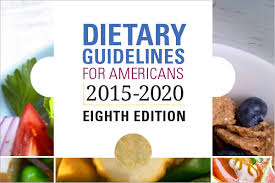 So, in the name of balance, I will eat according to the current Dietary Guidelines for Americans, show you what this type of diet looks like, and provide more information on the Guidelines (since the interpretation of these Guidelines varies quite a bit).
So, in the name of balance, I will eat according to the current Dietary Guidelines for Americans, show you what this type of diet looks like, and provide more information on the Guidelines (since the interpretation of these Guidelines varies quite a bit).
Will I get fat and sick? Follow along and see on this website or my twitter account.
You can Find the Current Dietary Guidelines for Americans at this link.
Share This:
